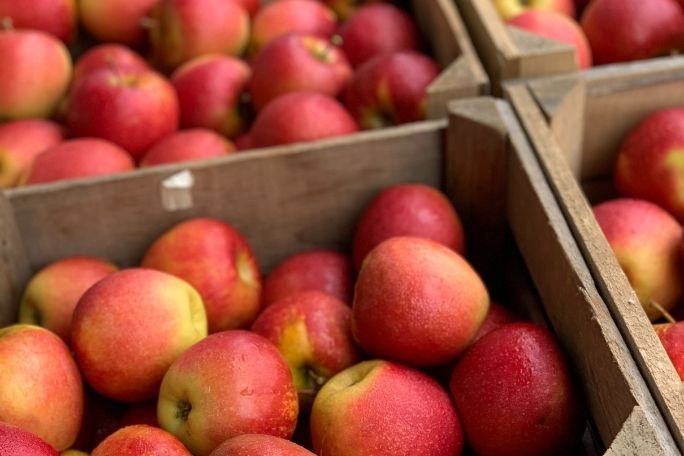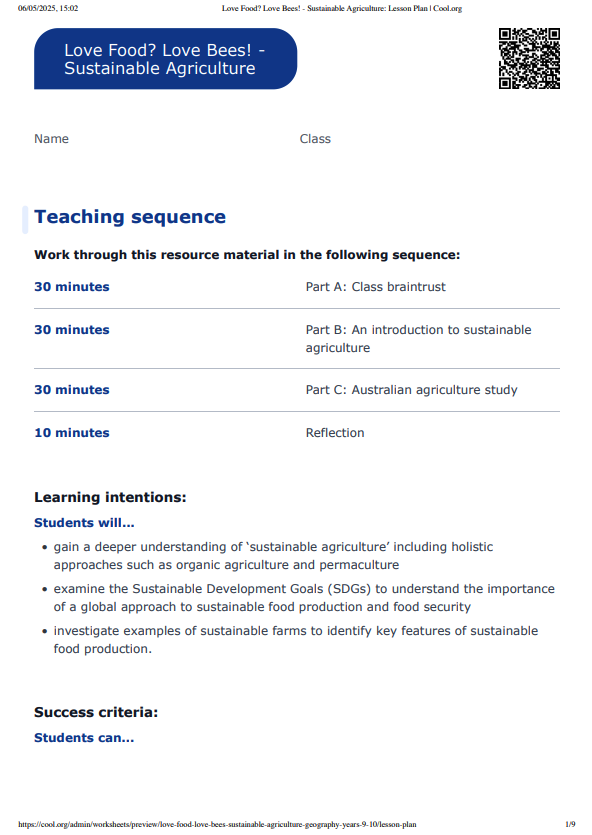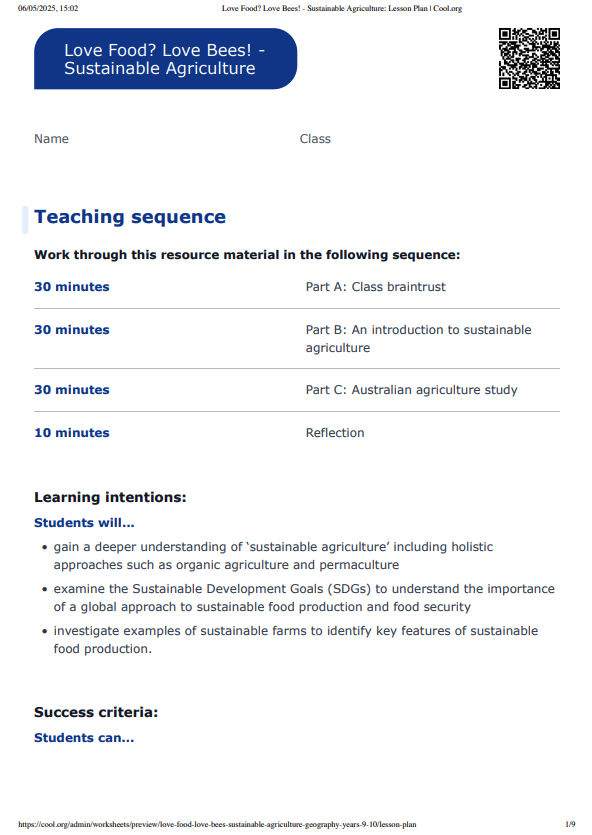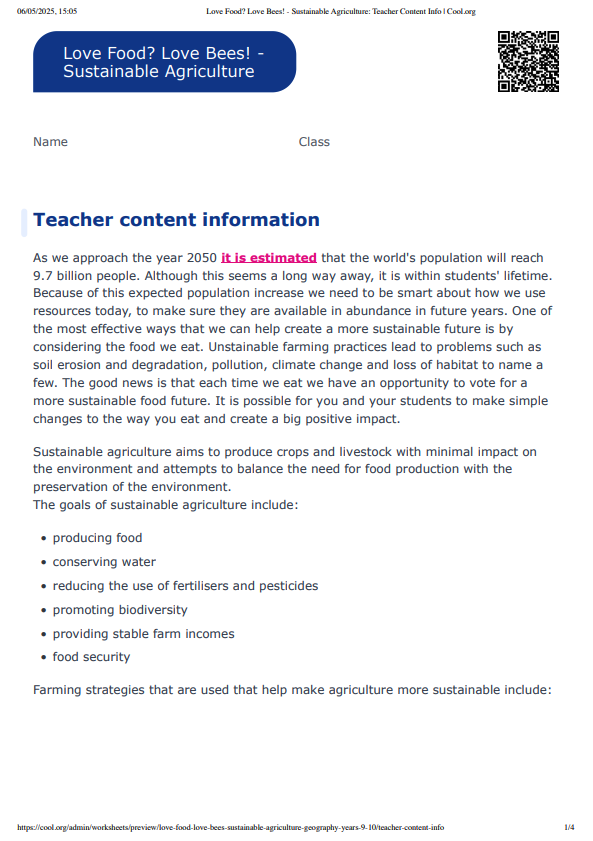Lesson summary
In this lesson, students will examine the concept of sustainability as it applies to agriculture, and explore links between sustainable agriculture and food security. Students will study the characteristics of sustainable agriculture to answer the question, ‘What does sustainable agriculture look like?’ They will examine holistic approaches to sustainable agriculture such as regenerative agriculture, organic farming, permaculture and agriculture supporting pollinators. Students will then research a local farmer using sustainable practices and work to educate their community on this topic.
Learning intentions:
Students will...
- gain a deeper understanding of ‘sustainable agriculture’ including holistic approaches such as organic agriculture and permaculture
- examine the Sustainable Development Goals (SDGs) to understand the importance of a global approach to sustainable food production and food security
- investigate examples of sustainable farms to identify key features of sustainable food production.
Success criteria:
Students can...
- identify common features of sustainable agriculture
- explain the link between SDGs, sustainable agriculture and food security
- apply their learning to selected farm studies.
Lesson guides and printables
Curriculum links
Select your curriculum from the options below.
Lesson details
Skills
This lesson is designed to build students’ competencies in the following skills:
- collaboration
- communication
- critical thinking
- digital literacy
- empathy
Curriculum Mapping
Australian curriculum content descriptions:
Year 9 Geography:
- The capacity of the world’s environments to sustainably feed the projected future global population (ACHGK064).
- Challenges to food production, including land and water degradation, shortage of fresh water, competing land uses, and climate change, for Australia and other areas of the world (ACHGK063).
Year 10 Geography:
- Human-induced environmental changes that challenge sustainability (ACHGK070).
- Environmental world views of people and their implications for environmental management (ACHGK071).
- The application of systems thinking to understand the causes and likely consequences of the environmental change being investigated (ACHGK073).
Syllabus outcomes: GE5-2, GE5-3, GE5-4, GE5-5
General capabilities: Literacy, Information and Communication Technology (ICT) Capability, Literacy, Critical and Creative Thinking
Cross-curriculum priority: Sustainability
Relevant parts of Year 9 achievement standards: Students analyse interconnections between people, places and environments and explain how these interconnections influence people, and change places and environments. Students synthesise data and information to draw reasoned conclusions.
Relevant parts of Year 10 achievement standards: Students identify, analyse and explain significant interconnections between people, places and environments and explain changes that result from these interconnections and their consequences. They predict changes in the characteristics of places and environments over time, across space and at different scales and explain the predicted consequences of change. They evaluate alternative views on a geographical challenge and alternative strategies to address this challenge using environmental, economic, political and social criteria and draw a reasoned conclusion.
Unit of work: Love Food? Love Bees! – Food Security and Sustainability – Year 9 & 10
Level of teacher scaffolding: Medium – teacher needs to organise students’ work to be posted to the wider community.
UN Sustainable Development Goals
- Target 15.5: Take urgent and significant action to reduce the degradation of natural habitats, halt the loss of biodiversity and, by 2020, protect and prevent the extinction of threatened species.
Resources Required
- Student Worksheets – one copy per student
- Sustainable Agriculture Factsheet – one copy per student
- Enough internet-enabled devices to facilitate group work
- A stopwatch, timer app or access to an online timer
- Permission to post students’ work on a school social media account or another medium that your school uses to share information with the community such as a school blog or newsletter. If this is not possible, a display area in a part of the school frequented by members of the community, such as an administration office, is a great option to display work.
Additional Info
This lesson has been created in partnership with ACT for Bees. ACT for Bees is a not-for-profit organisation taking action to preserve these essential pollinators, ensuring a food-secure future.
Related Professional Learning
How To Teach Sustainability With Hope
Quick summary: This course is for both primary and secondary teachers of all subjects, but especially for English, Science, Humanities and Geography teachers who are covering climate change and the cross-curriculum priority of sustainability.





Welcome back!
Don't have an account yet?
Log in with:
Create your free Cool.org account.
Many of our resources are free, with an option to upgrade to Cool+ for premium content.
Already have an account?
Sign up with:
By signing up you accept Cool.org's Terms and Conditions(Opens in new tab) and Privacy Policy(Opens in new tab).